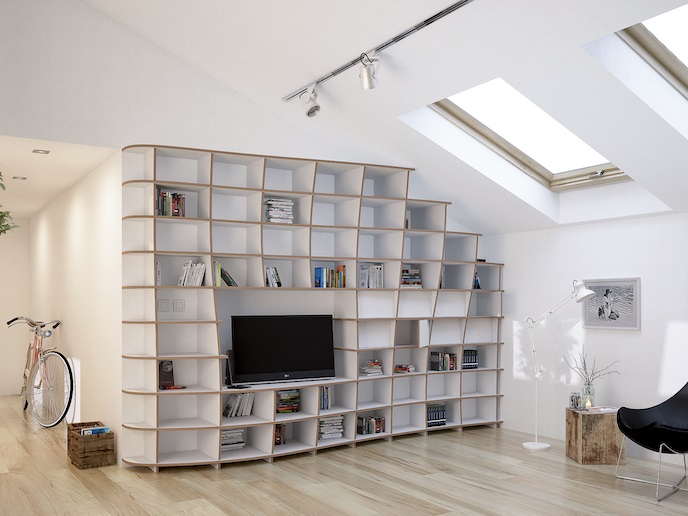Intelligent design-to-production platform creates custom-built furniture
Narrow corridors, high or sloping ceilings and awkward nooks can make it difficult to find the right furniture which is also aesthetically pleasing. But the 3DConfigurator integrated design platform, called form.bar(opens in new window), makes individualised design easy for a layperson and then automates the production of the furniture on demand. “We are looking at the whole process, so we developed a new design-to-production process to make it possible for anyone to shape their own furniture. We enable people to decide what kind of product they want and where it is produced,” says 3DConfigurator project coordinator Alessandro Quaranta, co-founder and CEO of form.bar. All that is needed is a carpenter or production site with a CNC milling machine which allows for automated control of machining tools via computer-coded programming instructions. “We send the data of the customised furniture directly to the production place near the customer. We don’t have to send furniture around the world. This is new and revolutionary, like having a carpenter next door,” Quaranta explains. The innovative approach has been recognised by the German design Awards where it won the Excellent Communications Design Interactive User Experience in 2020.
Freeform algorithms for natural designs
“You can customise the width and height, and also create your own shapes,” Quaranta adds. The 3DConfigurator software can create aesthetically pleasing freeform furniture by allowing the customer to take a shape and modify it. “It is like using your hands to push and pull shapes to create a design that would not be possible simply using physical materials,” he says. “The algorithm optimises the shape at every step. Furthermore, it checks that it is stable – whether the furniture will stand or fall. You can add or delete pieces or segments so it’s a functional piece of furniture,” Quaranta explains. EU funding enabled the process to be fully automated. New features were added to the original prototype to visualise customer designs as photorealistically rendered 3D models. Machine specifications were also integrated into the design process. New templates speed up the design elements and tracking options were used to understand user behaviour and streamline the system.
From design to automated production
The software automatically checks for producibility and pricing. “The algorithm checks it in 3D in real time so you can see the price at every step. Then you click on ‘order’ and the production data is automatically produced by our software and sent to production,” he notes. Fewer materials are consumed as the software creates optimised cutting patterns for the furniture maker, who cuts it – usually from wood boards. Assembly consists of sticking the pieces together so screws are not needed. “We are already making furniture with paper or recycled material made from plastic bottles. We can make furniture with plexiglass and natural material like stone – we can use this process with any kind of material,” adds Quaranta.
Better for the environment
Research by form.bar has found that compared to an equivalent shelf from a furniture store, form.bar-designed and produced shelves generate 55 % less carbon dioxide and 33 % less particulate matter, and consume half the amount of water. They reduce pollutants that enter waterways and help preserve biodiversity through a 65 % reduction in land use. A unique feature of the system is the network of carpenters, joiners and furniture makers using the system that has been built up and is already one of the biggest networks in Germany and probably in the world. Carpenters from Brazil, Nigeria, Romania, Slovakia, South Africa and the United Kingdom are also members.







